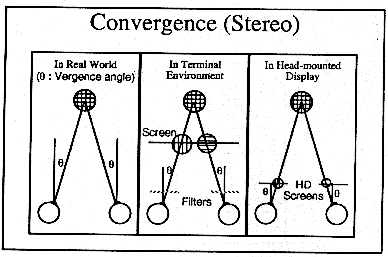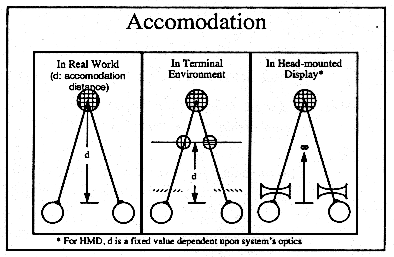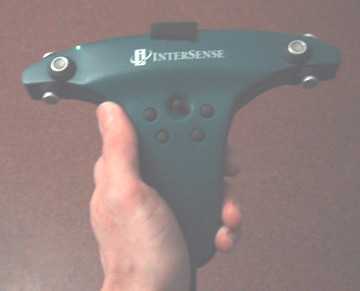Vision
“Your
vision will become clear only when you look into your heart. Who looks outside,
dreams. Who looks inside, awakens.” – Carl Jung
Perhaps we will show Jung wrong when we develop technology that
lets us look into ourselves by looking outward – W.O.M.B.
What
qualities do our vision senses require for immersion?
There are 8 depth cues that deliver spatial information in what we
see:
- Occlusion (hidden surfaces)
- Perspective Projection (parallel lines meet at
infinity)
- Binocular Disparity (each eye sees a different view)
- Motion Parallax (due to head motion)
- Convergence (rotation of the eyes to view a
close object)
- Accommodation (change of shape of eye to view
a close object - focus)
- Atmospheric (fog)
- Lighting and Shadows
All of the above can be accomplished
with current technology with the exception of accommodation - VRD
Stereoscopic Vision
The majority of our spatial
clues do not require binocular disparity, in fact we
only use it to gauge distance when objects are within a few feet of us.
There are 2 major
techniques for delivering different images to each eye:
Projection Based Techniques
- The image source contains the content intended
for each eye
- Red/Green filters used since the 50's in 3D
films
- Modern 3D films use diffraction grating
- Shutter glasses allow the use of a simple time
sequencing – Crystal Eyes
Head Mounted Techniques
- The image source is located in front of each
eye
- Early stereo viewers from the
early 1900’s
- Ivan Sutherland’s first experiments used a
head mounted display
- Due to their heaviness, some HMD’s use a counterweighted boom


Both techniques have
advantages and disadvantages:
Projection Based Techniques
- usually can deliver greater resolution
- usually deliver viewer comfort because the
device is not on the user’s head
- range of motion is restricted to the location
encompassed by the display
- less likely to cause disorientation because
the user is also aware of their physical surroundings
Head Mounted Techniques
- usually allow a much more natural interaction
with the display because they move with the user
- require more accurate tracking because motion
delays are more unsettling
- range of motion is only limited to the length
of cords or wireless transmission
- can gain the advantages of physical awareness
by using a semi-occluding screen (i.e. augmented reality)
What is the relationship to input?
The output of stereoscopic
immersive display systems will only be as good as the tracking ability of the system.
Tracking Techniques
Mechanical
- highly accurate
- low latency
- highly encumbering
- only allow single object to be
tacked in the same space (1 sensor)
Sonic
- highly accurate
- high latency (sound travels
slowly)
- low encumberence
- allows multiple sensors
Optic
- high/low accuracy
- high latency (due to processing)
- unencumbering when using a low number of markers/long setup
time when seeking high accuracy
- allows multiple sensors
- suffers from occlusion problems
that may lead to inaccurate results under common situations
Magnetic
- medium accurate
- medium latency (speed of light
on wires)
- medium encumbering (lightweight wires
can be used)
- allows multiple sensors
- inexpensive

The InterSence IS-900 uses sound for accurate position and
accelerometers for fast response
